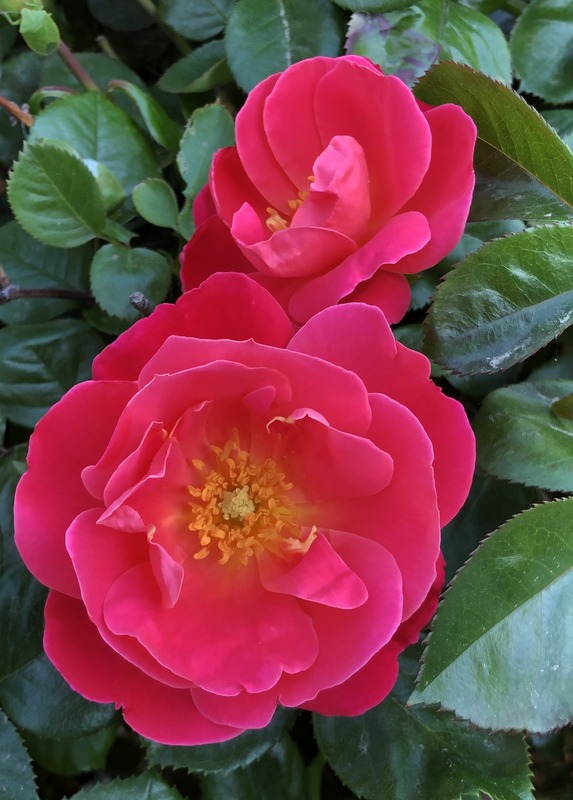|
|
'Brick House™ Pink' rose Description

Photo courtesy of Jim Sproul
ARS:
Exhibition name: Brick House™ Pink
Bloom:
Pink. None to mild fragrance. up to 15 petals. Average diameter 3.25". Medium to large, semi-double (9-16 petals), borne mostly solitary bloom form. Prolific, blooms in flushes throughout the season. Ovoid buds.
Habit:
Medium, bushy, compact. Medium, semi-glossy, dark green foliage. 3 to 7 leaflets.
Height: up to 16" (up to 40cm). Width: up to 16" (up to 40cm).
Growing:
Can be used for beds and borders, garden or landscape. Disease susceptibility: very disease resistant, blackspot resistant.
Breeder's notes:
Pink Brick House™, introduced for 2020 by Star Roses and Plants, is a compact, disease resistant Floribunda rose with bright, fluorescent flowers that are produced continuously from spring through frost. It maintains an excellent habit both in containers and in the landscape. The seed parent is a sister seedling of L56-1.
Patents:
United States - Patent No: PP 32,663 on 22 Dec 2020 VIEW USPTO PATENTApplication No: 16/602,929 on 30 Dec 2019 Inventors: Sproul; James (Bakersfield, CA)
Applicant: The Conard-Pyle Company West Grove PA
The new variety of Rosa hybrida floribunda rose plant was created during April of 2011 in Bakersfield, Calif., U.S.A., by artificial pollination ....The female parent (i.e., the seed parent) was the progeny of an unnamed seedling (non-patented) and the `Sprothrive` variety (U.S. Plant Pat. No. 23,549). The male parent (i.e., the pollen parent) was the `Radtko` variety (U.S. Plant Pat. No. 16,202). ....description is based on the observation of three-year-old specimens of the new variety during May while growing on their own roots in a three-gallon container at Cochranville, Pa., U.S.A.
|